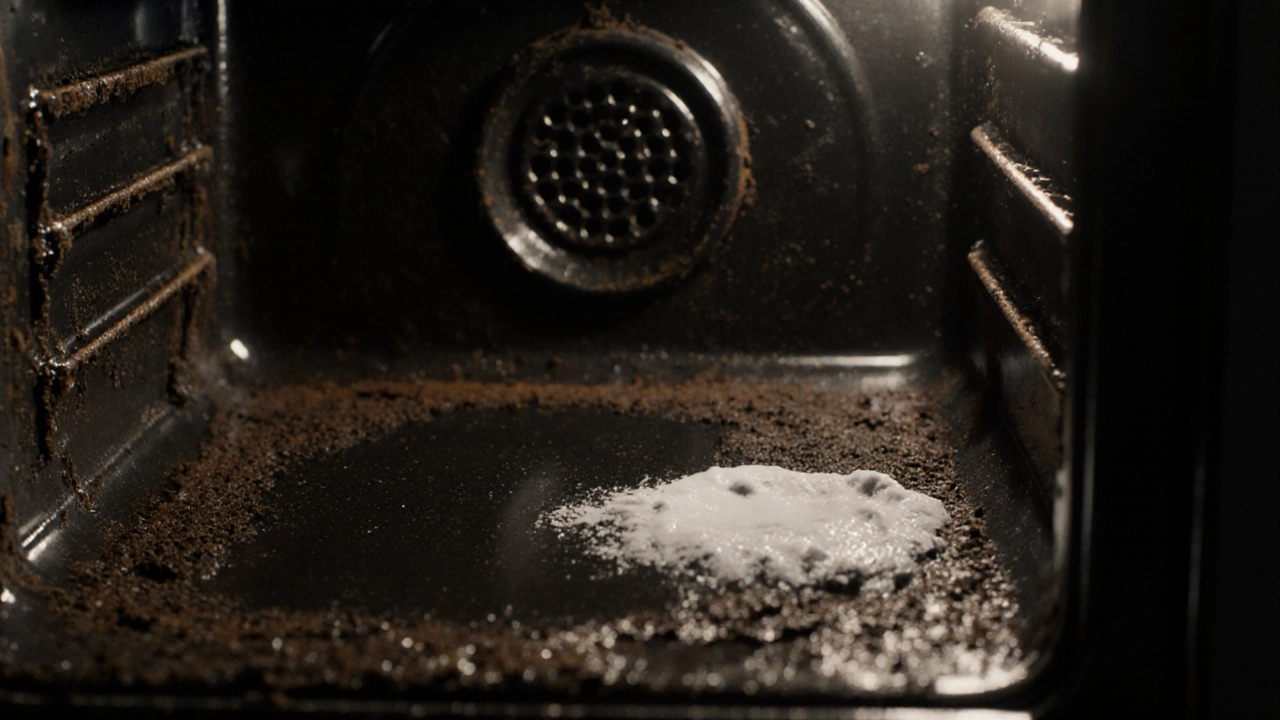Baked-on Oven Grease: How to Remove It Without Harsh Chemicals
When baked-on oven grease, a thick, sticky residue that builds up over time from cooking fats and food splatters turns into a stubborn, burnt-on layer, most people reach for strong chemical cleaners. But you don’t need them. Baked-on oven grease is just fat that’s been heated, cooled, and reheated so many times it’s fused to the surface—like a sticky, oily paint. It’s not magic, it’s physics. And there are simple, safe ways to break it down using things you already have in your kitchen.
Related to this is oven door glass, the transparent panel that lets you watch food cook without opening the door. It’s often the hardest part to clean because it’s exposed to the same grease but can’t handle abrasive scrubbing. Then there’s natural oven cleaner, a category of non-toxic, biodegradable solutions like baking soda, vinegar, and citric acid that work by breaking down grease chemically without fumes or risks. These aren’t just trendy alternatives—they’re the tools professional cleaners use when they want results without damaging surfaces or irritating people with allergies.
Here’s the truth: commercial oven cleaners work fast because they’re caustic. They eat through grease, but they also eat through finishes, rubber seals, and sometimes even your lungs. Meanwhile, natural methods take a little longer—but they’re safer for your family, your pets, and your oven’s long-term health. You don’t need to scrub for hours, either. A paste of baking soda and water left overnight softens the grease so it wipes away with a damp cloth. Vinegar spray afterward cuts through any remaining stickiness and leaves no residue. It’s not guesswork—it’s a proven method used in homes and commercial kitchens across the UK.
And if you’ve ever tried cleaning oven racks or the bottom of the oven, you know it’s not just about the grease. It’s about the grime that’s baked into crevices, the carbonized bits stuck to heating elements, and the smell that lingers even after wiping. That’s why the best solutions combine time, moisture, and gentle abrasion. You don’t need a steam cleaner or a $200 gadget. You need patience, a sponge, and the right sequence.
What you’ll find in the posts below are real, tested methods—no fluff, no marketing hype. From how to clean oven door glass with baking soda and vinegar without scratching it, to why some DIY mixes fail and others actually work, we’ve gathered the advice that professionals use when they’re not on a job. You’ll see what works on gas ovens versus electric, how to handle self-cleaning cycles without damaging them, and even what not to do (yes, aluminum foil on the bottom is a bad idea). This isn’t about quick fixes. It’s about understanding how grease behaves, how heat changes it, and how to reverse the process without buying another bottle of chemicals.

What Dissolves Baked-On Oven Grease? Top Proven Solutions That Actually Work
Discover the most effective ways to dissolve baked-on oven grease, from chemical cleaners to natural DIY methods. Learn what works, what doesn’t, and how to prevent it from coming back.
Read More